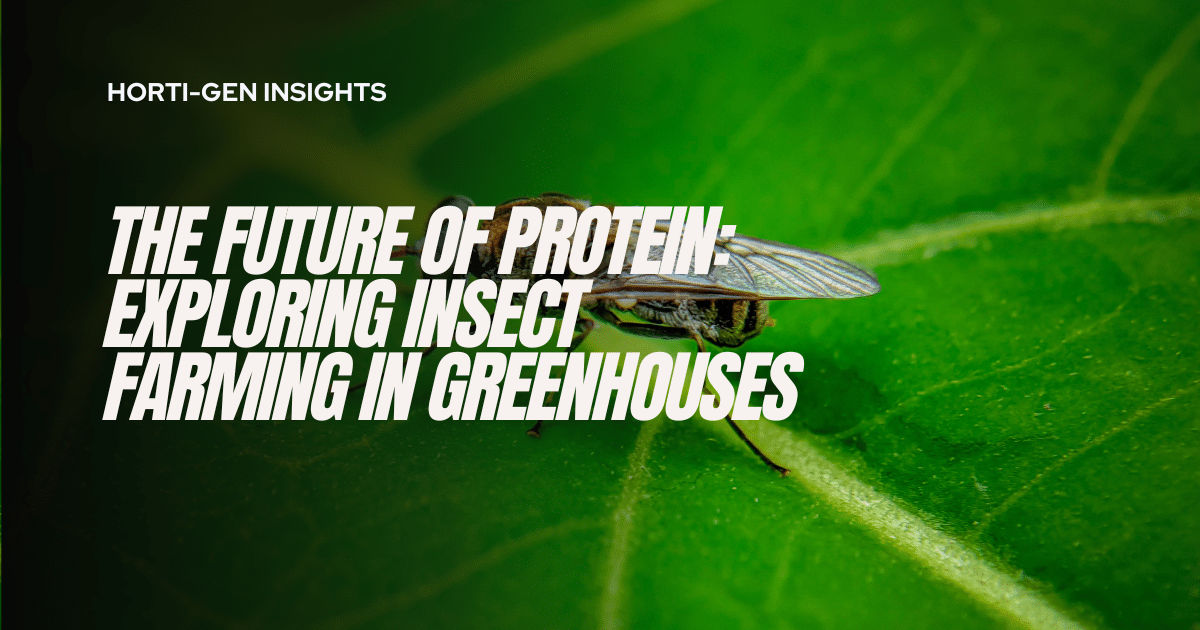Key Takeaways:
- Insect farming presents potential benefits for reducing pressure on marine ecosystems.
- The global edible insect market is projected to reach $1.2 billion by 2024, driven by interest in sustainable protein sources.
- Controlled Environment Agriculture (CEA) offers a method for optimizing insect farming efficiency.
- Black Soldier Fly (BSF) larvae are among the insect species gaining attention for alternative protein sources.
The Increasing Focus on Protein Diversification
The global food system is encountering significant challenges due to climate change, population growth, and resource scarcity. These factors are prompting a search for alternative protein sources that are sustainable and efficient. Insect farming, particularly in controlled environments like greenhouses, is emerging as one possible solution to these challenges.
Growth of the Edible Insect Market
The global edible insect market is expected to grow, with projections suggesting it could reach $1.2 billion by 2024. This expansion is partly due to a rising interest in sustainable protein sources and a gradual shift in consumer perceptions regarding insects as a viable food and feed option. Regulatory changes, especially in regions such as the European Union, have also played a role by approving certain insect species for human consumption and use in aquaculture feed.
Insect farming may help reduce the demand for wild-caught fish, often used in aquaculture feed, potentially easing the strain on marine ecosystems. Some studies indicate that insect-based meals, such as those made from black soldier fly (BSF) larvae, can replace a portion of fishmeal in aquaculture diets without significantly impacting fish growth or health.
Controlled Environment Agriculture and Insect Farming
Controlled Environment Agriculture (CEA) provides an approach to insect farming that aims to optimize growing conditions. By carefully controlling factors such as temperature, humidity, lighting, and gas levels, CEA enables year-round production, which is important for meeting the demand for insect-based products.
CEA systems are designed to use resources efficiently, potentially reducing water usage and improving feed conversion compared to traditional livestock farming. Additionally, these systems may help lower the risks associated with pest infestations and diseases, contributing to more consistent production outcomes.
Key Insect Species in Controlled Environments
Several insect species are well-suited to CEA, including the black soldier fly (Hermetia illucens), mealworms (Tenebrio molitor), and house crickets (Acheta domesticus). These species are noted for their high protein content and adaptability to controlled environments, making them relevant for both human food and animal feed applications.
Expert Perspective on BSF Cultivation
Dr. Émilie Devic, an insect culture expert and Deputy Secretary of the Asian Food and Insect Association (AFFIA), notes that controlled environments can be particularly beneficial for black soldier fly (BSF) farming. Greenhouses, for instance, may offer advantages in terms of cost efficiency and energy use, particularly in tropical climates. According to Dr. Devic, controlled environments can help ensure consistent production and optimize conditions for insect growth and reproduction.
The Potential of Frass as a Soil Amendment
Insect farming also produces frass, a by-product that includes insect excrement and exoskeletons, which can be used as a fertilizer. Maurice Dagenais, Director of Sales – Fertilizer with Entosystem, explains that frass contains plant nutrients and beneficial microorganisms that can improve soil health. While frass production is still developing, its use in agriculture, particularly in greenhouse and field crops, may increase in the future.
Read the complete edition here.



1 Comment